Westfield, Indiana, USA
April 2,2024
Success pushing corn yields to new levels hinges on the details, says AgriGold Agronomist Nick Frederking. It requires a shift in mindset and recognition that not every field is the same. Farmers working to elevate yields need to improve their precision in three areas:
- Management intensity
- Planter pass complexity
- Nutrient levels
Honing farm management
Most farmers take a blanket approach to farm management, meaning there’s not much change in fertility or planting population from field to field, according to Frederking. To move yields to the next level, farmers need to manage by field, which means knowing differences in soil type, pest pressures and geography. Frederking adds, “A full understanding of a field can help dictate what strengths farmers’ hybrid selections play to.”
Targeting 300-bushel-an-acre corn yields requires an even more detail-oriented approach. “You break that 40-acre field into 40 different zones, identify where your limiting factors are within those zones and address those issues,” Frederking explains. Grid sampling, tissue sampling and drone technology can guide analysis and troubleshooting.
“Start with soil sampling. Look at water movement through a field by zone. Vary planting populations and nutrient applications by field zone. Analyze tissue samples and whether that data aligns with soil samples,” Frederking advises. “At the end of the season, pull harvest data from those individual zones and identify where the limiting factors are and where they’re not.”
Planter technology can also add bushels
“Another way to increase yield is with the planter,” Frederking says, noting those yield gains once again hinge on the details. Seeding depth and plant spacing are major considerations.
“Our research has shown that depth control, even emergence and giving each plant the individual space it needs adds yield,” Frederking says. “The more even you can make that spacing, the more success you’ll have.” Optimal spacing encourages even root mass throughout the field, and it means farmers won’t have two plants competing for nutrients, light and CO2.
“When you’re targeting the 300-bushel-an-acre mark, you’re talking about a near flawless planter,” Frederking says. “The seeding depth is right, the planter spacing is optimal. You’re covering the rows correctly, and the planter doesn’t create any sidewall compaction.”
Newer planter technology can make quite a difference in yield, according to Frederking. “It’s tough to believe, but I see better plant spacing with high-speed planters cruising along at 10 miles an hour than I do with older planters moving at 4.5 miles per hour.”
Downforce control has made a major difference with seeding depth, he says. Two inches deep is a good rule of thumb with corn. “Shallow planting for the sake of seeing seed emerge in seven to 10 days is the wrong move,” he warns.
Whatever the yield target, Frederking says farmers need to make sure they’re getting out of the tractor and checking that what’s happening in the field matches what they see from the cab.
Diving deeper on nutrients
The final focus area for pushing yields to new levels is with more intense nutrient management. Most farmers are paying attention to the pH of their soil and feeding nitrogen (N) to their crops. “But if they want to climb the graph to the 250-bushel-an-acre yield level, farmers need to take a more detailed look at macronutrients and zinc,” Frederking says.
“Insufficient phosphorus (P) can prevent crops from taking the next jump in yield levels, so that’s a nutrient critical to the success of a crop,” he says. Potassium (K) also deserves attention, especially in Frederking’s territory of southern Illinois that is prone to deficiencies in the macronutrient. Just as important as N, P and K is sulfur, he continues.
Zinc, which is technically a micronutrient, can also add bushels when used in small amounts. “We can apply zinc with the planter in a liquid form and have found it’s low-hanging fruit for a few extra bushels,” Frederking says.
To take yields to the 300-bushel-an-acre level everyone dreams about, Frederking says farmers can’t skimp on any nutrients. They may also need to consider microbes and micronutrients few are applying.
“To run at optimum levels, we might take multivitamins to supplement what’s already in our diet,” Frederking says. “The crop is no different. It will respond if we give it everything it needs.”
Determining what the crop needs is an exercise in and of itself. “You can’t just take a whole bottle of multivitamins in a day and expect great results,” Frederking says. “There are ratios to keep in mind with all these nutrients and, of course, it all goes back to what soil and tissue samples show a field or field zone needs.”
Phase-in changes and don’t be afraid to ask for help
A farmer shouldn’t change everything up at once. “In my first year as an agronomist, I made the mistake of looking through the 12 nutrients provided by a tissue sample and recommending steps for addressing each,” Frederking shares. “We did have success, but we couldn’t measure where it was coming from since we had thrown everything at the crop.”
Farmers committed to pushing their yields to the next level should start by evaluating tissue and soil samples and establishing a baseline for what they’re already doing, Frederking says. “From there, they can start making one or two changes each year, with the goal of gradually moving the needle on yields.”
With so many variables and details to consider in the technologically advanced world of farming, it’s easy to get intimidated. The best thing you can do in that scenario is reach out to your local agronomist.
Farmers don’t have to go about it alone, Frederking says. “When you buy seed from AgriGold, you’re also getting service, and this is part of that service. We’re happy to take that weight off your shoulders and put our resources to use to help you identify what’s holding back your yields.”
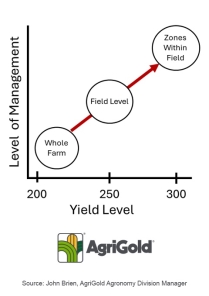
Farmers need to shift from a blanket approach to more targeted management by field or field zone if they want to push yields to new levels.
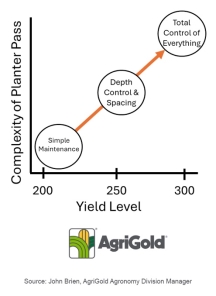
Advances in planter technology have improved seed depth and placement, key elements to achieving higher yields.
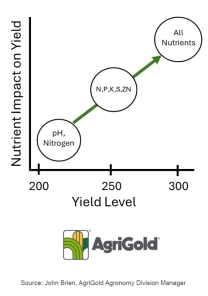
Soil tests and tissue samples can guide farmers’ efforts to feed the crop what it needs to thrive.
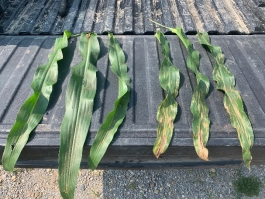
Just one management change (a planter-applied fungicide) boosted green tissue and plant production, upping yields by 16 bushels an acre.
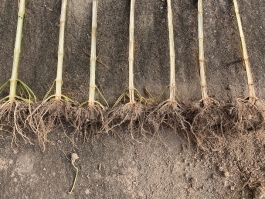
Deterioration of the pith tissue within the stalk can signal nutrient deficiency, with potassium often linked as a culprit.
ABOUT AGRIGOLD
AgriGold offers high-performing hybrids paired with the latest agronomic knowledge and data to achieve exceptional crop performance, year after year. Based in Westfield, Indiana, AgriGold is for the farmer who wants a true seed partner that is an ally in the field. For more information, visit AgriGold.com and follow us on Facebook, Instagram, LinkedIn and X, formerly known as Twitter.
ABOUT AGRELIANT GENETICS
AgReliant Genetics is committed to providing trusted seed solutions that help farmers grow. We do this by focusing solely on seed and delivering one-of-a-kind, high-performing hybrids. Founded in 2000 by global seed companies KWS and Limagrain, AgReliant Genetics benefits from direct access to a global corn germplasm pool and has a top four corn research program. Through our seed brands — AgriGold® and LG Seeds in the U.S. and PRIDE® Seeds in Canada — we proudly offer the latest innovation to our farmer customers, whether they grow corn, soybeans, sorghum or alfalfa. Discover more at AgReliantGenetics.com.